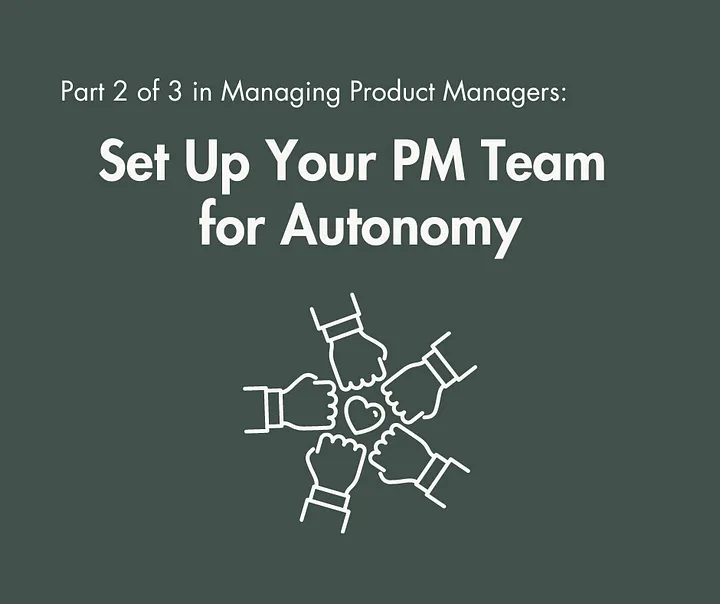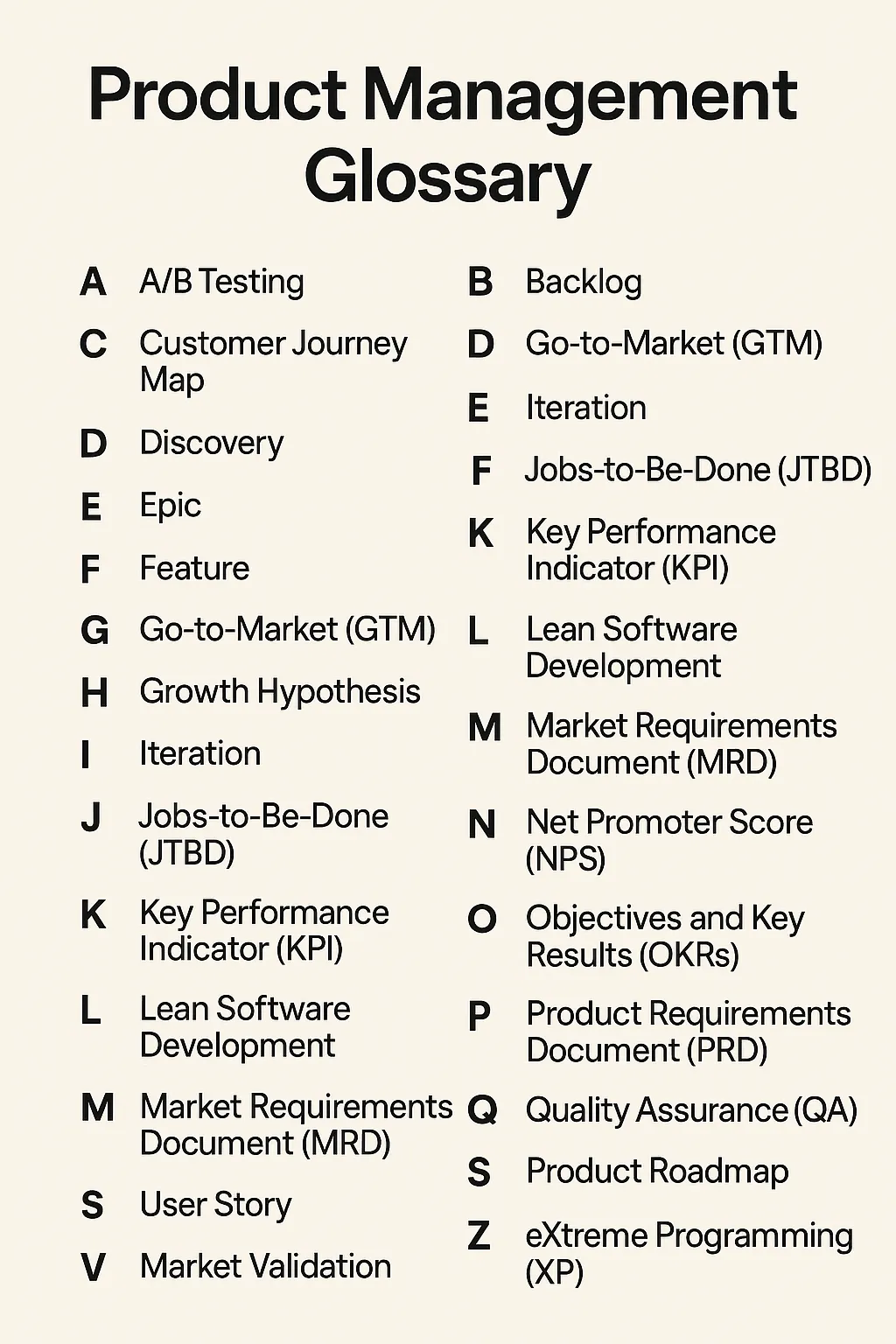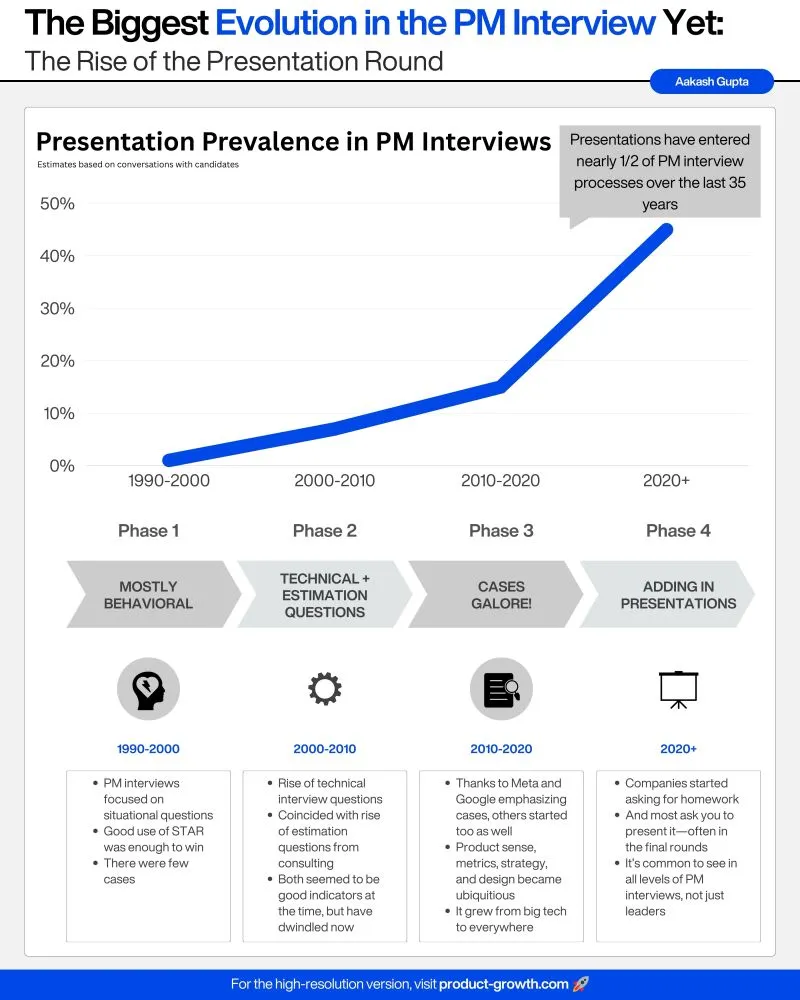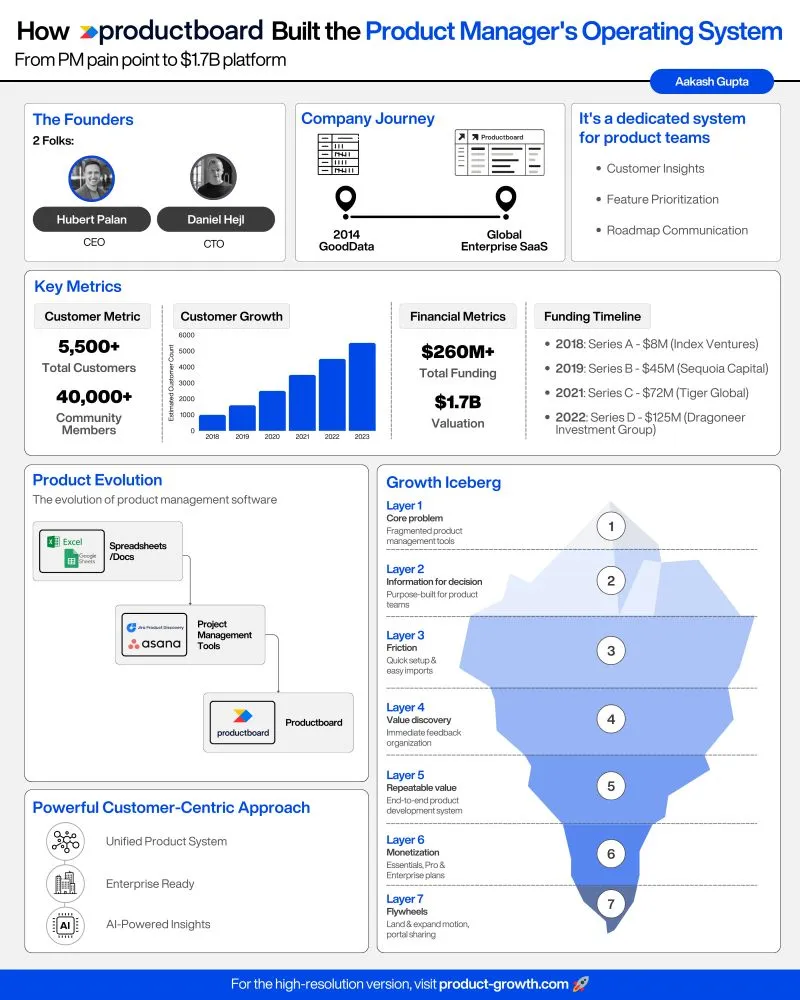
Managing Product Managers Part 2 of 3: Set Them Up for Autonomy
How to be an absolutely badass manager of product managers. Whether you’re the CTO, CPO, founder, or GPM, focus on these 3 pivotal areas to ensure your PMs thrive.
Hey there, PM whisperer! Welcome back to Part 2 of my 3-part series on managing product managers. If you missed Part 1, where I shared strategies to help your PMs focus on the right things, be sure to check it out. Today, we’re diving into how to set your PMs up for autonomy.
Autonomy is a game-changer for product managers. It fuels innovation, drives ownership, and unlocks their full potential. But autonomy without structure can spiral into chaos. The trick? Striking that sweet spot: enough guidance to keep everyone aligned, with the freedom to make decisions and take smart risks. Let’s dive into how to set up your PMs to soar while keeping things running smoothly.
🧰 Part #2 of 3: Set Them Up for Autonomy
“Build projects around motivated individuals. Give them the environment and support they need, and trust them to get the job done.” — Agile Manifesto Principles
Empowering product managers with autonomy is like giving them wings. It fuels innovation, drives ownership, and unlocks their full potential. But let’s face it, autonomy without structure can spiral into chaos. The trick? Striking that sweet spot: enough guidance to keep everyone aligned, with the freedom to make decisions and take smart risks. As your team grows, nailing this balance becomes even more crucial. Your mission? Build a squad of empowered decision-makers, not permission-seekers. Let’s dive into how to set up your PMs to soar while keeping things running smoothly.
To Set Your PM Team Up for Autonomy We’ll Cover:
- 🚥 Define Clear Roles & Decision-Making Processes
- ⚽️ Leverage Lightweight Processes
- 🛑 Minimize Red Tape
- 🔄 Encourage Experimentation & Iterative Development
- 🎙 Support Their Stakeholder Management
- 🪄 Provide Program Management If You Can
🚩 Red Flags That This Isn’t Going Well..
- PMs frequently seek approval for decisions, even minor ones.
- There’s confusion about who is responsible for what.
- PMs are afraid to experiment or take risks.
- The team is bogged down by excessive meetings and nonsensical processes.
- There’s a lack of new ideas coming from the PMs.
- PMs are frequently interrupted or pulled into tasks outside their core responsibilities.
- Stakeholders often bypass PMs to make product decisions directly with development teams.
- When they deliver incremental value to users, they’re often told to finish the project before the team is happy with the quality of that work.
- PMs struggle to manage cross-functional relationships effectively.
- The team seems stressed and overwhelmed, unable to prioritize effectively.
🚥 Define Clear Roles & Decision-Making Processes
Clarity is the foundation of autonomy. When PMs know exactly what they’re responsible for and how decisions should be made, they can act with confidence.
Try this:
- Establish clear roles: Define and communicate each PM’s areas of responsibility. Be specific about products, features, or user segments they own. Clarify key metrics or goals each PM is accountable for. Make sure all PMs know what each other is working on.
- Push decisions down: Empower those closest to the issues to make decisions. They often have the best context. Ensure decision-makers have necessary resources and authority. Make escalation paths clear, but avoid unnecessary intervention.
- Leverage a decision-making framework: I’m a HUGE fan of DACIs (Driver, Approver, Contributor, Informed). Encourage PMs to use these tools to drive crucial conversations and create just enough documentation for transparency without drowning in paperwork.
- Cultivate psychological safety: Foster an environment where PMs feel safe taking on responsibility, rather than fearing blame for well-reasoned decisions that don’t pan out.
- Support their decisions: Once you’ve given PMs decision-making power, back them up. This builds trust and encourages bold thinking.
⚽️ Leverage Lightweight Processes
As organizations grow, lightweight processes become essential scaffolding for autonomy. The key is finding the sweet spot between structure and flexibility. Too much process stifles creativity and slows progress, while too little can lead to chaos. Aim for “just enough” process to provide clarity and alignment without hindering agility. And of course, these processes should evolve with your team, so regular review and adjustment based on feedback is crucial.
Try this:
- Start lean: Begin with minimal processes and add only what’s necessary.
- Focus on outcomes: Design processes that drive results, not just busy work.
- Adapt agile methodologies: Implement practices that enhance communication and streamline workflows. Customize these to fit your team’s specific needs. Not sure where to start? Start with the Retrospective and allow that to guide additional process changes to support your team.
- Create cross-functional teams: Where possible, form product teams that include engineers, designers, and other relevant roles alongside the PM.
- Empower process improvement: Continually keep an eye on changing or removing processes and meetings that aren’t adding enough value to cover their cost. Allow PMs and their teams to suggest and implement process changes.
🛑 Minimize Red Tape
Autonomy thrives when unnecessary bureaucracy is stripped away. Your job as a leader is to clear the path for your PMs to do their best work. Every bit of red tape you remove is more time your PMs can spend on creating value for your customers and business.
Try this:
- Streamline processes: Regularly review and simplify your workflows. If a process doesn’t add clear value, consider eliminating it.
- Provide necessary resources: Ensure your PMs have the tools, data, and access they need to make informed decisions quickly.
- Reduce dependencies: Work on decoupling teams and reducing cross-team dependencies where possible. This allows PMs to move faster and more independently.
- Trust, but verify: Instead of requiring multiple approvals for every decision, set clear guidelines and trust your PMs to follow them. Use retrospectives to catch and correct any issues.
- Encourage direct communication: Foster an environment where PMs can reach out directly to other teams or stakeholders without going through unnecessary layers.
Pro tip: Ask your PMs regularly about what’s slowing them down. Often, they’ll have insights into bureaucratic bottlenecks that you might not see from your vantage point.
🔄 Encourage Experimentation & Iterative Development
Autonomy thrives when PMs feel empowered to ship early, learn quickly, and iterate based on real customer feedback. Remember, innovation often comes from the freedom to explore and experiment. Your role is to provide the safety net that allows your PMs to take those leaps.
Try this:
- Embrace the MVP: Ship early and often with short feedback loops. Encourage PMs to identify the smallest viable product that delivers value and generates customer feedback. Quickly measure feature impact, learn from data, and iterate. This Build-Measure-Learn cycle accelerates product improvement and innovation.
- Allocate time for refinement: Build in time for teams to refine and improve features post-launch based on user feedback and data. Great teams want to deliver polished experiences. Ripping them away before they can create something they’re proud of is a recipe for disaster.
- Encourage calculated risk-taking: Train your team to ask, “What’s the worst thing that could happen?” This helps surface potential risks and develop mitigation strategies. Be explicit about your level of risk tolerance and why. Consider investing in tools like LaunchDarkly so you can segment new things to only some users, roll things out slowly, etc.
- Celebrate learning, not just successes: Emphasize the importance of learning from both successes and failures. Host regular retrospectives to extract insights from all experiments and iterations. Recognize PMs who gather valuable insights through iteration, regardless of whether the initial hypothesis was correct.
- Provide innovation budgets: Allocate resources (time, money, engineering support) specifically for experimentation and innovation projects. Consider implementing a “20% time” policy or regular hackathons where folks can explore new ideas outside their regular roadmap.
- Share learnings widely: Encourage PMs to document and share insights from their experiments and iterations across the organization.
Pro tip: When a PM comes to you with a new, potentially risky idea, resist the urge to say “no” immediately. Instead, ask “How might we…?” to help them refine and de-risk their concept.
🎙 Support Their Stakeholder Management
Effective stakeholder management is crucial for PMs to drive their products forward. Your role is to help them navigate complex organizational dynamics and maintain strong relationships across the company. Done well, folks will stay informed without being overwhelmed. Done great, it will also build a stronger sense of community and shared purpose.
Try this:
- Encourage proactive communication: Product teams often get so focused on their work that they forget to update the rest of the organization. Help PMs understand the importance of keeping stakeholders informed about progress, plans, and challenges to maintain alignment.
- Co-create a lightweight reporting process: Work with your PMs to develop a streamlined way of touching base with other teams and sharing updates that meets stakeholders’ needs without overburdening the team. Consider key departments like marketing, sales, and customer support. As their leader, you also need regular updates so it’s crucial you tell your teams what you need.
- Teach stakeholder mapping: Guide PMs in identifying key stakeholders and understanding their interests and influence.
- Break down silos: Discourage information hoarding and encourage open communication across all levels of the organization. Consider workshops or brown bag sessions where teams can share insights and learn from each other.
- Coach on difficult conversations: Provide guidance on how to manage conflicting priorities or deliver tough messages to stakeholders.
- Leverage asynchronous, searchable options: Meetings to update stakeholders are vastly overused. Using tools like Confluence, Slack, Loom, Github, etc.
At About.com, each PM and GM emailed a weekly “3x3” update: 3 bullets of key accomplishments that got done that week and 3 bullets of what’s coming next. At Atlassian, we used Confluence as an intranet and Slack to communicate short updates and links out along the way. I much prefer this way as it’s searchable and referenceable over time.
🪄Provide Program Management If You Can
As a self-proclaimed process junkie, I’ve often found myself doubling as a de facto project or program manager, even in product roles. But my perspective changed dramatically when I first worked with an experienced Program Manager. The impact was immediate. I suddenly had so much more time for strategic work! A skilled Program Manager is invaluable for process development, documentation, and cross-team coordination. Once your team grows to 5+ product managers, bringing in someone to officially manage these aspects can be transformative.
Try this:
- Hire strategically: Bring on a dedicated Program Manager to support teams with process development and documentation. This person should be experienced in operations and project management and trained in agile and lean processes. They should ask smart questions.
- Streamline coordination: Task them with improving cross-team communication and collaboration. Leverage their expertise to spot and resolve process inefficiencies. The best program managers act as multipliers to every team they work with.
- Manage complexity: Use their skills to handle dependencies across multiple projects. Encourage them to surface risks, rather than eliminate them altogether.
- Facilitate all the things: Having a dedicated facilitator can be wonderful and allows teams to focus and fully engage in the work of meetings, rather than that always falling on the PMs to manage. Program managers can also lead regular retrospectives, spot trends across teams, and help you highlight the need for larger training initiatives or process improvements.
Wrapping up…
Setting your PMs up for autonomy is crucial for fostering innovation and driving ownership. By defining clear roles, leveraging lightweight processes, and minimizing red tape, you create an environment where your PMs can thrive. As you apply these strategies, remember that every team and organization is unique. Reflect on how these ideas can be tailored to your specific situation.
What’s one thing you can do today to help your PMs gain more autonomy? I’d love to hear your thoughts and experiences in the comments. And don’t forget to check out Part 1 of this series if you haven’t already.
In Part 3 we’ll explore how to coach your PMs’ growth and help them reach their full potential. Check it out!
By the way, I’m currently on the lookout for new opportunities to lead and grow product teams. If you’re seeking someone to help your product organization level up, let’s connect!
I also want to give a huge shoutout and thanks to Ed Biden’s timely LinkedIn post about this. It and the comments definitely inspired a few of my points.
If you enjoyed this piece, please give it some claps! I’ll be so grateful! 👏👏









Comments ...
No Comments Yet ...Add One